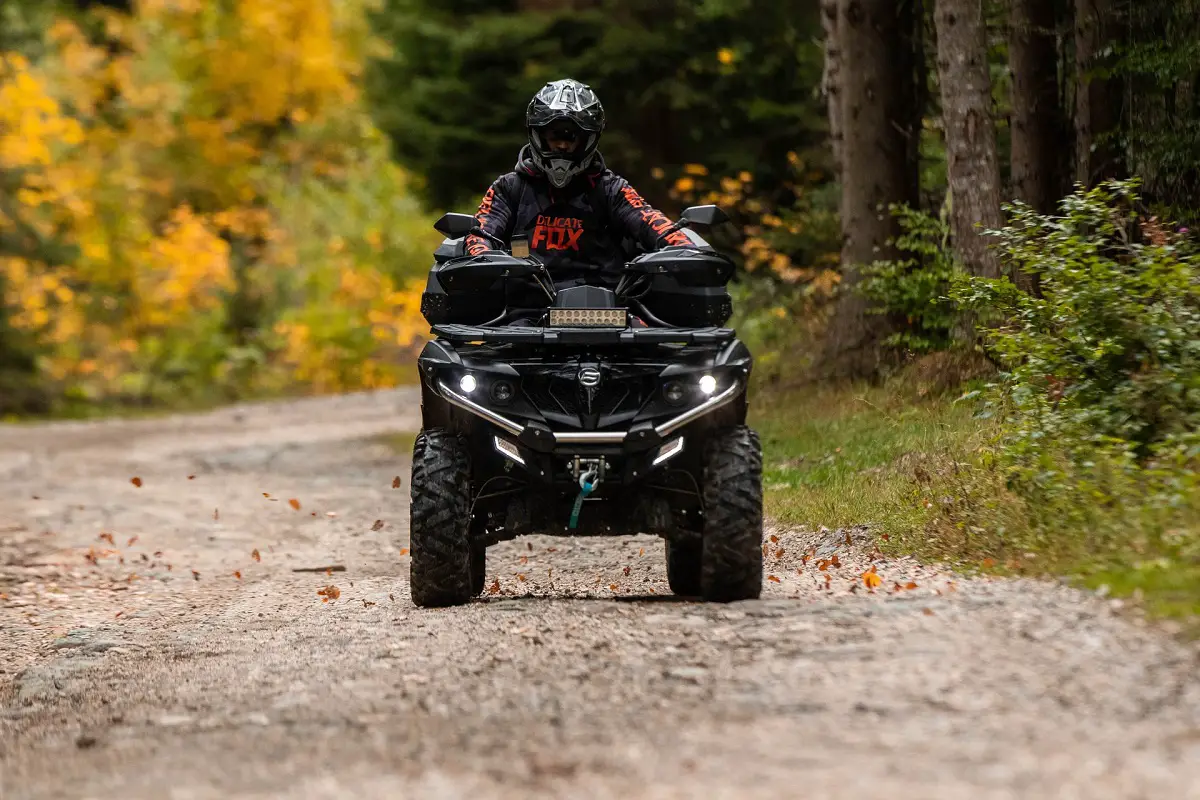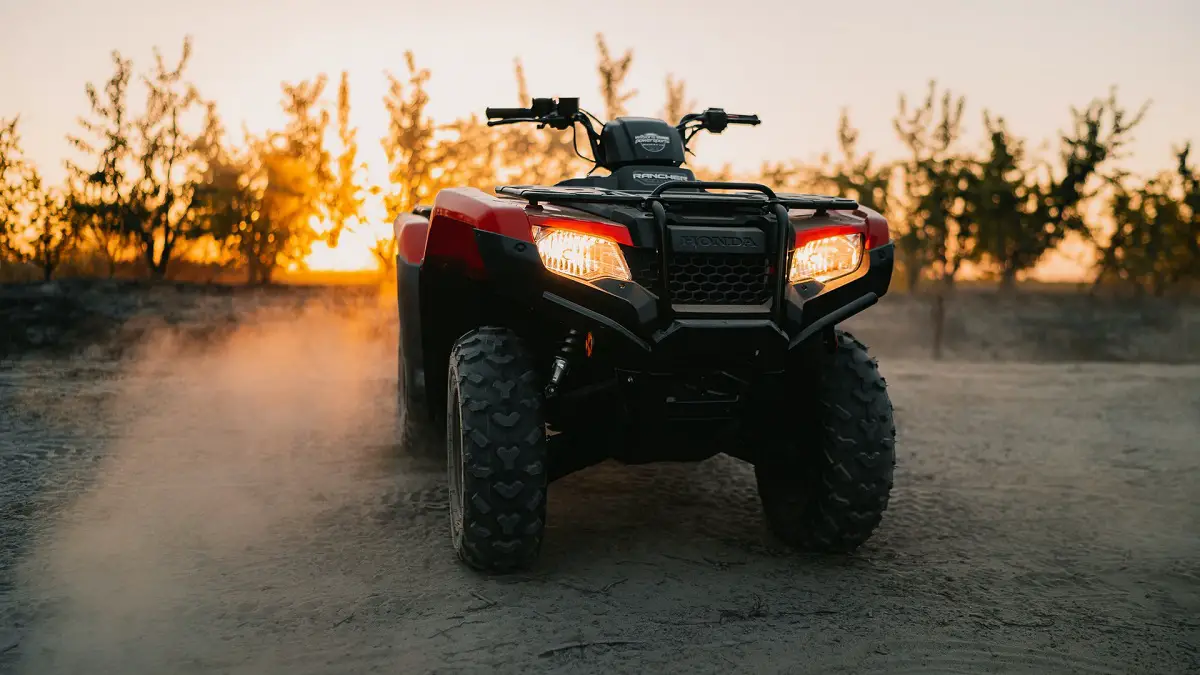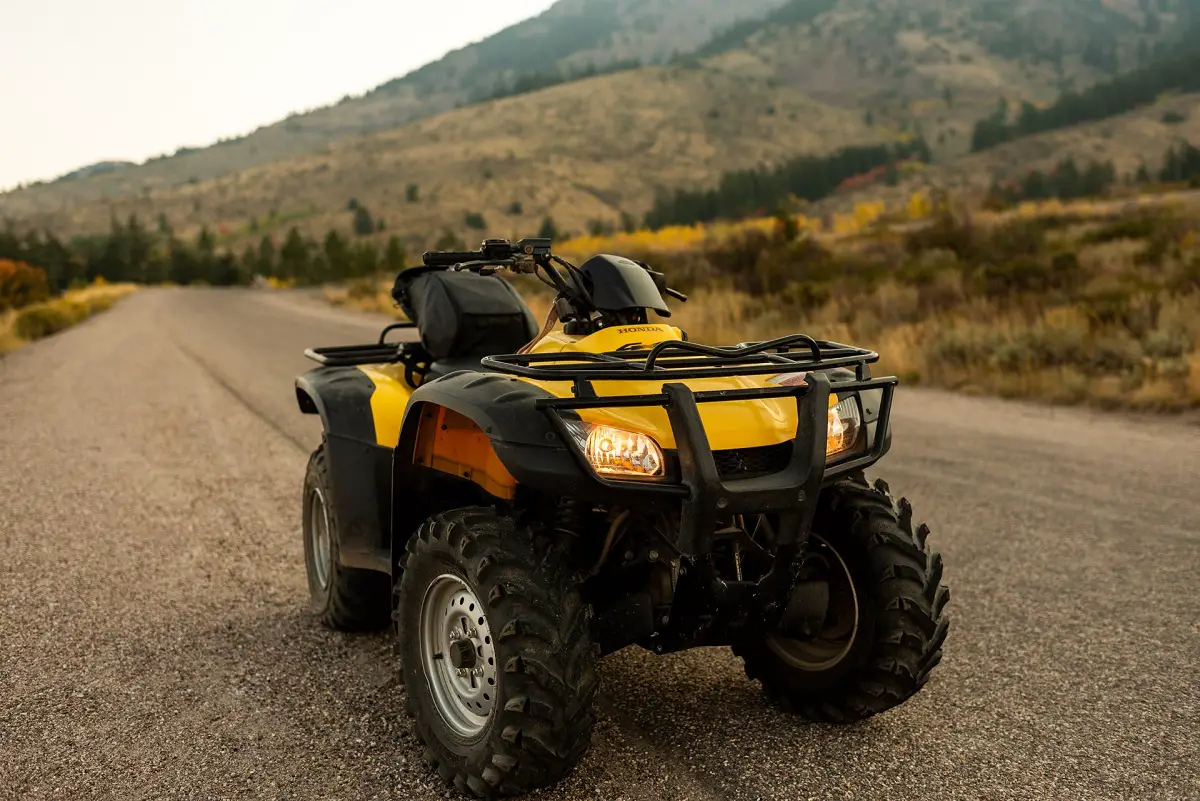ATVs are super fun, there’s no question there. But sometimes, it can be a little frustrating trying to figure out the regulations where you live in. So if you’ve been wondering, “Can you drive an ATV on the road?” this state-by-state guide will help you.
It can be confusing since the laws can differ so drastically from place to place, but it is a necessary hurdle if you want to know if you can ride quads on the road.
So Can You Drive 4 Wheelers on the Road?
There is, unfortunately, no one size fits all answer to the question of driving an ATV on the road. It will all depend on where you live, state by state.
Fortunately, we have a list of all 50 US states and what their specific laws say about ATV riding on the road. You may even be living in one of the states that completely prohibit ATVs from the road; check it out below.
Alabama
Alaska
- When crossing roadways
- If regular motor vehicles can’t be used on the road due to extreme snow or ice conditions
- When driving on the outside shoulder of an access highway in the same direction of traffic
Arizona
- On-road use is allowed if the ATV is equipped with a horn and a license plate
- Riders should carry proof of insurance at all times while riding
- The vehicle must also pass an emissions test.
Arkansas
- The road is outside city limits and isn’t a major highway
- The ATV is being used for farming or hunting
- When crossing a public street or highway
- The rider has a major walking disability or has lost at least one leg above the ankle
- The rider is an emergency responder
California
- When crossing a two-lane street at 90 degrees
- When crossing a street with more than two lanes in a scenario when such crossing is allowed by the appropriate signs
- Whenever an authority has deemed ATV travel allowed on specific streets, but only if it isn’t dark, the ATV has rubber tires, the street has a stoplight, and you have a driver’s license
Colorado
- When crossing the street
- When the street permits their use
- When crossing a bridge
- During special events with authority permission
- During emergency conditions made official by the state
- When used for farming
Connecticut
- Only for a rider with a valid driver’s license and only when crossing a street at a 90-degree angle that is not a limited-access highway
Delaware
- Completely prohibited. You may push an ATV on the side of the road, but in neutral only
Florida
- Mostly prohibited. You may use an ATV on unpaved public roads with a speed limit of 35 mph, but only during the daytime.
Georgia
Hawaii
- When the ATV is used as farming equipment
- When it is operated by someone with a category 3 driver’s license under section 286-102
- When the ATV is operated on streets with only one or two lanes and the speed limits do not exceed 35 mph
- When used to travel between properties designated for agriculture
- When being operated by a city official, country official, or state official
- When used in counties with populations less than 500,000
Idaho
- Allowed on public roads as long as one possesses a valid license plate, valid driver’s license, and liability insurance. Must also have valid IDPR OHV.
- Federal and state highways prohibited

Illinois
- Prohibited unless on public streets while crossing at a 90-degree angle while yielding the right of way to anyone else
Indiana
- Generally prohibited, but with numerous exceptions.
- Operation while yielding the right of way to public highways is allowed
- Crossing public highways at a 90-degree angle is allowed
- Allowed in Indiana City
- Allowed in numerous jurisdictions; check here for the complete list
Iowa
- Generally prohibited, except in specified counties.
- You may cross public streets under the following conditions:
- The crossing is done at 90 degrees
- No obstruction is present
- You come to a complete stop before attempting the cross
- Always yield the right of way
Kansas
- Allowed with a registered vehicle and valid driver’s license
Kentucky
- Generally prohibited, except on streets and roads that have been designated by the Transportation Cabinet
- Exceptions are for when crossing a street at 90-degree angle, or on two-lane highways for maintenance, farming, or snow removal purposes
Louisiana
- Generally prohibited but with numerous exceptions. See here for the complete list.
Maine
- Permitted but under specific, numerous conditions. See here for the complete list.
Maryland
- Must have at least one headlight, one red taillight, a proper braking system, a muffler, rider with a helmet and eye protection to be used on public lands
Massachusetts
- Completely prohibited for public roads, but some areas are allowed, such as various state forests
Michigan
- Permitted if ATV is registered as a motor vehicle
Minnesota
- Generally prohibited, but the following roads are permitted:
- Median of a 4-lane highway
- With the right of way of freeways or highways
- With the right of way between opposing lanes of traffic
- On trails considered non-motorized
- At airports
- Snowmobile trails
- Must also possess a valid driver’s license
Mississippi
- Partially permitted; depends on a city-by-city basis rather than statewide. For more information, check here.
Missouri
- Generally prohibited unless given special permissions by authorities for agricultural purposes.
Montana
- Permitted as long as the is ATV street legal, which means equipped with a mirror, brake lights, headlights, a horn, and must be registered.
- Must have a valid driver’s license and valid license plate
Nebraska
- Permitted if a road has one or two traffic lanes and under the following conditions:
- The road is outside the city or village limits
- The road is within corporate limits but granted permission by authorities
- The road is within an unincorporated city or village limits but authorized by the county board
Nevada
- Mostly prohibited unless permitted by local authorities
New Hampshire
- Mostly prohibited, except when granted permission by authorities for OHRV use
- When granted, the ATV cannot exceed 10 mph and must stay to the right of the road always
New Jersey

New Mexico
- Permitted on public paved roads with a valid driver’s license, insurance, and safety permit, plus license plate and goggles or other eye protection.
- Prohibited on highways
New York
- Almost completely prohibited but with few exceptions:
- Only when crossing a public street at an angle of 90 degrees, coming to a complete stop before crossing, yielding right of way to all traffic
- Only on divided highways and not interstate or controlled-access highways
North Carolina
- Completely prohibited on all roads and highways except for crossing only
North Dakota
- Permitted if ATV is registered as street legal
- On roads with speed limits of 65 mph or less
- Must possess a valid driver’s license
- ATV must have a top speed of at least 35 mph
Ohio
- Generally prohibited but with some exceptions:
- Traveling in an emergency
- Crossing a street safely while yielding the right of way
- On the side of a street or highway for a limited distance
- In counties with local authorities granting permission on designated streets
Oklahoma
- Generally permitted under these conditions:
- The street is within a state park
- The street is within a municipality with permitted UTV operation
- County commissioners have permitted use
- The street is in an unincorporated area with a max speed limit of 25 mph
Oregon
- Completely prohibited with the exception of gravel roads that are one and one-half lane and not located in US Forest Service lands
Pennsylvania
- Generally prohibited but allowed on roads designated as snowmobile roads
- Can legally cross streets on a 90-degree angle
Rhode Island
- Prohibited on paved roads
- Allowed to cross public streets or divided highways at a 90-degree angle
- Must have headlights, tail lights and be at least 18 years old with a valid motor vehicle operator’s license
South Carolina
South Dakota
- Permitted if the vehicle is street legal, meaning registered, with four or more wheels, 200cc or more, at one or two headlamps, one tail lamp, registration plate, functioning brakes, a horn, directional turn signals, an exhaust system, a muffler and a red reflector at the rear of the vehicle
Tennessee
- Only on roads designated for ATV use and for agricultural purposes
Texas
- Prohibited except for farmers, utility workers, and law enforcement
Utah
- Only for crossing the street at 90 degrees unless made street legal
- Even with a street-legal ATV, interstate freeways and highways are not permitted
Vermont
- Prohibited except for the following exceptions:
- The street is not maintained during winter
- The street is designated for all-terrain vehicles
Virginia
Washington
- Street legal permitted on roads with speed limits of 35 mph or less
- Street legal means headlamp, a tail lamp, stop lamps, reflectors, turn signals, brakes, a mirror, a horn, a muffler, a windshield, and seatbelts
West Virginia
- Only permitted on roads with a center line or with more than two lanes
Wisconsin
- Only on roads or streets considered ATV routes
- May also be allowed to cross a road or bridge while yielding the right of way
Wyoming
- Allowed on public roads with an MPV permit
- Vehicle must be made street legal with a headlamp, tail light, brake light, red rear reflector, horn, and a left-hand rear-view mirror

FAQ: Additional Info and Legality on Riding ATVs
Now that we’ve covered riding ATVs on public paved roads, sidewalks, and highways, let’s discuss a few other places where you may or may not be able to ride your ATV and quads.
Can you Ride ATV in National Forest?
Some national forests allow you to ride ATVs but differ on a state by state or county by county basis. Check the laws in your area or the website of any nearby forest you live close to.
Can you ride an ATV in Yellowstone National Park?
Yellowstone National Park completely prohibits the use of UTVs and ATVs on their property.
Can you Ride ATVs on Snowmobile trails?
Many cities and states will allow ATVs to be used on designated snowmobile trails. Double check the laws in your area to make sure.
Can you ride an ATV in the snow?
Some ATVs can work well in the snow, but it will depend on the kind of wheels they use, how thick the tires are, and how thick the snow is.


